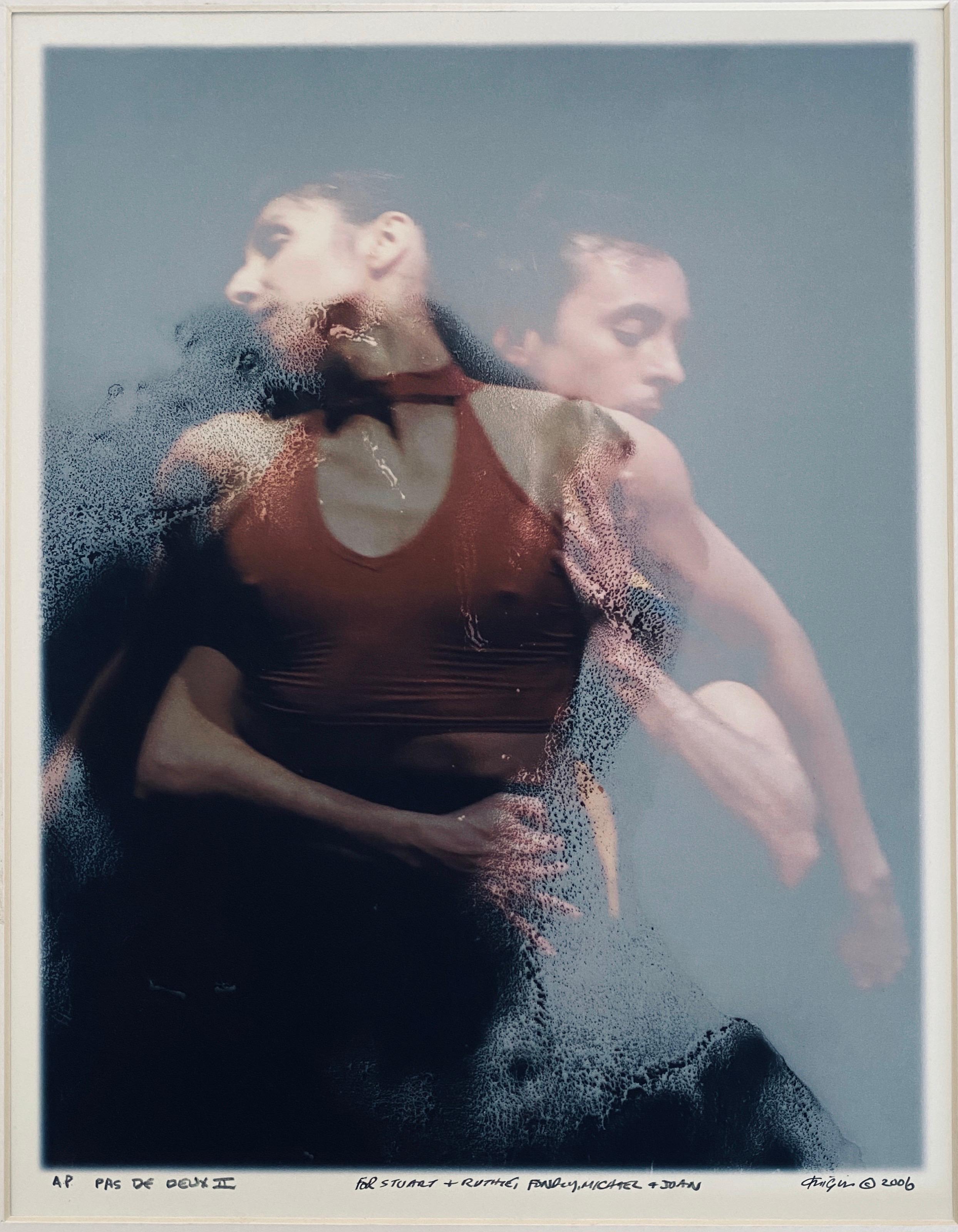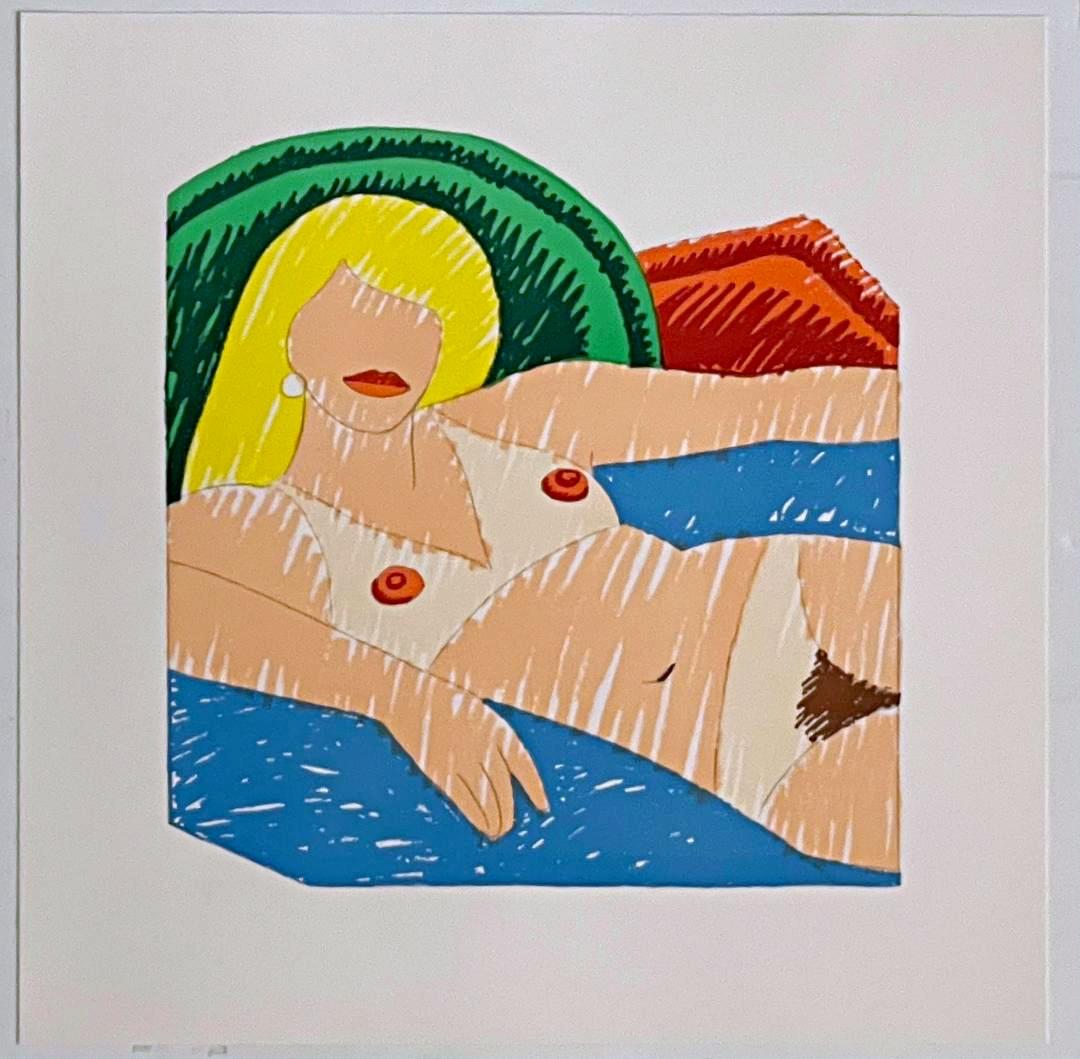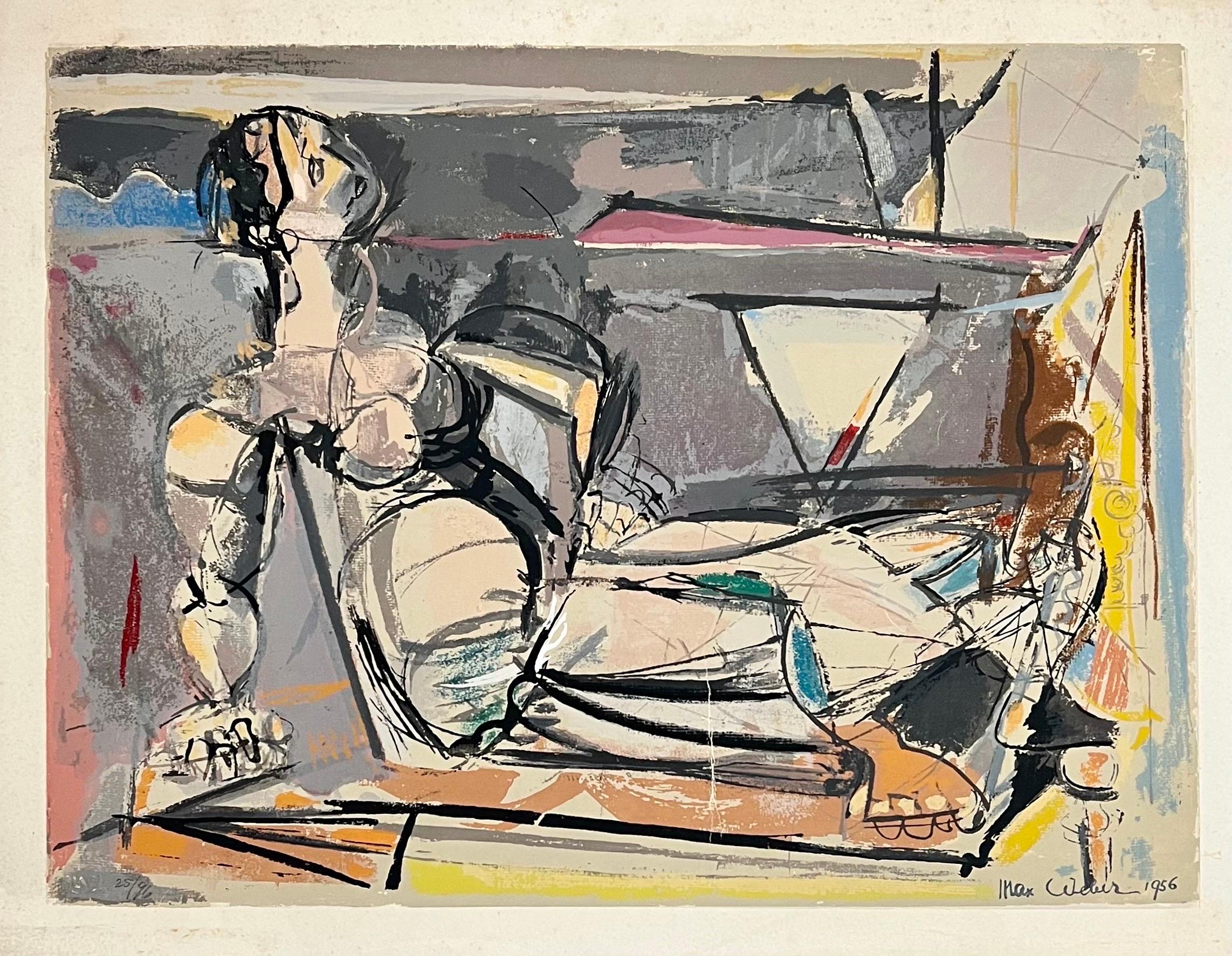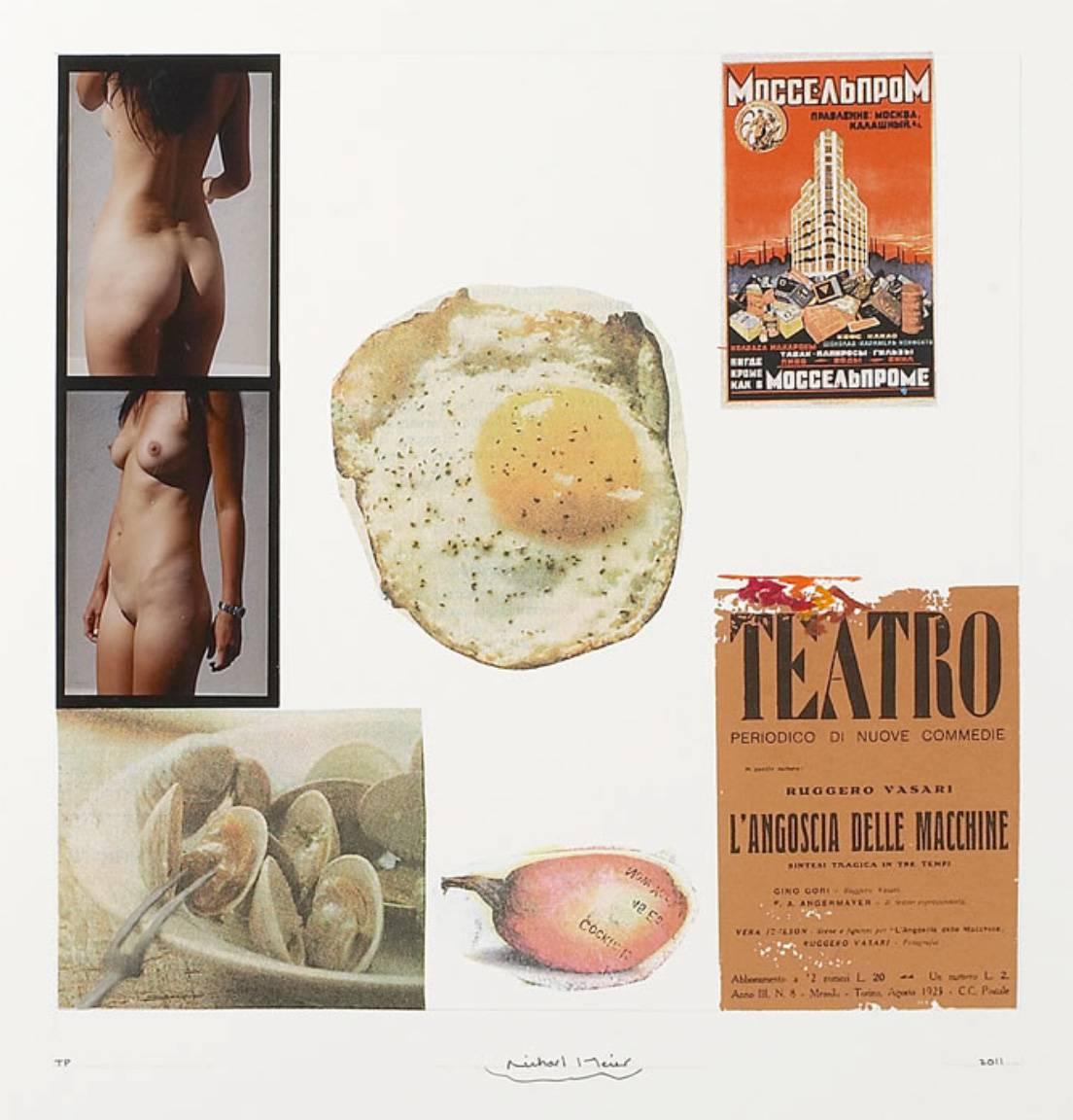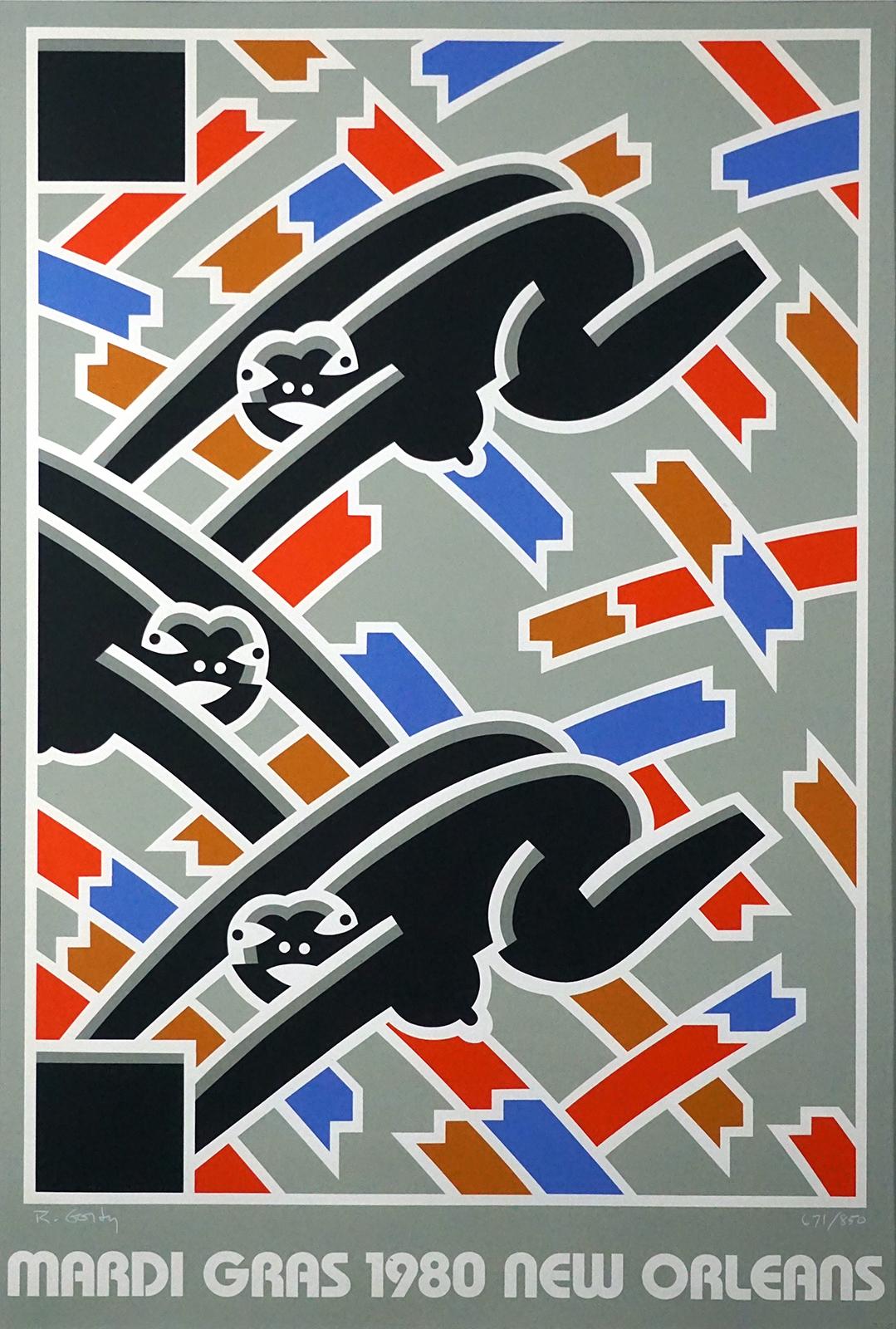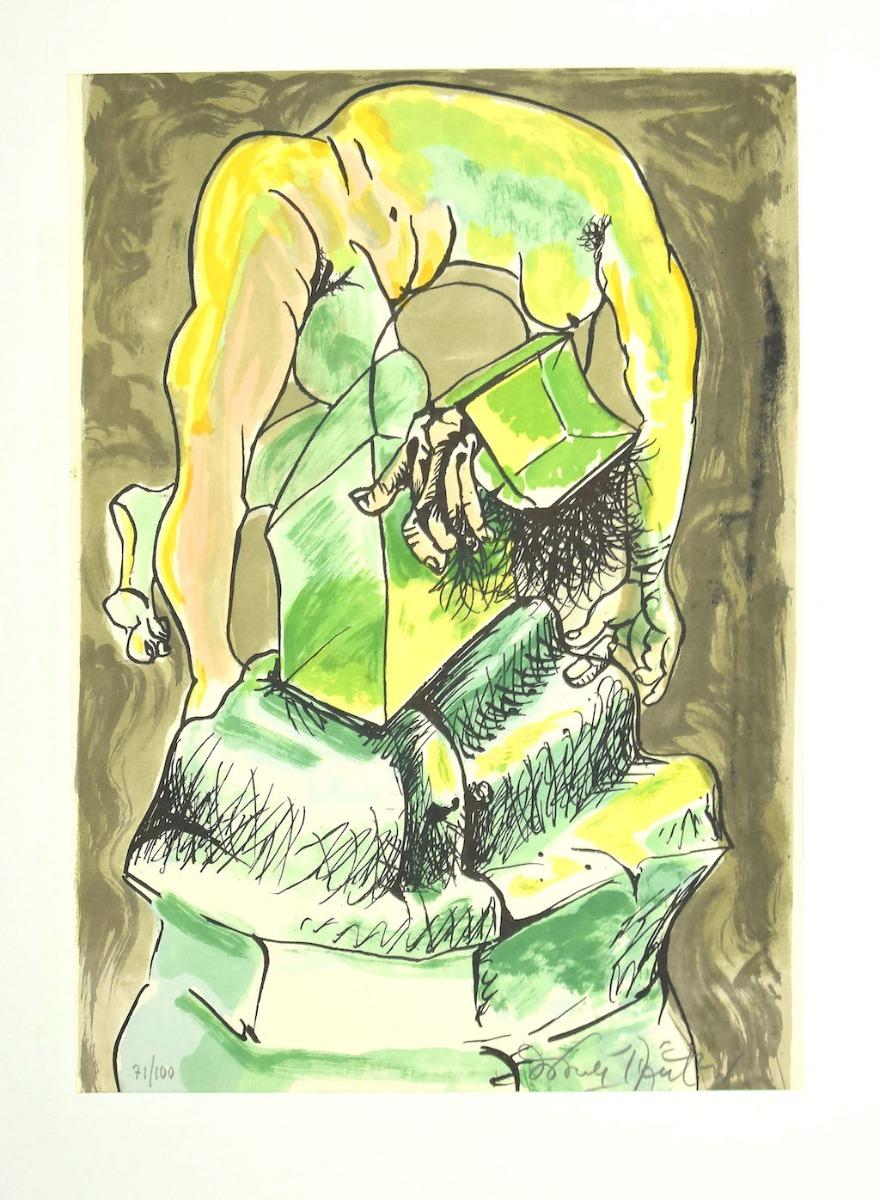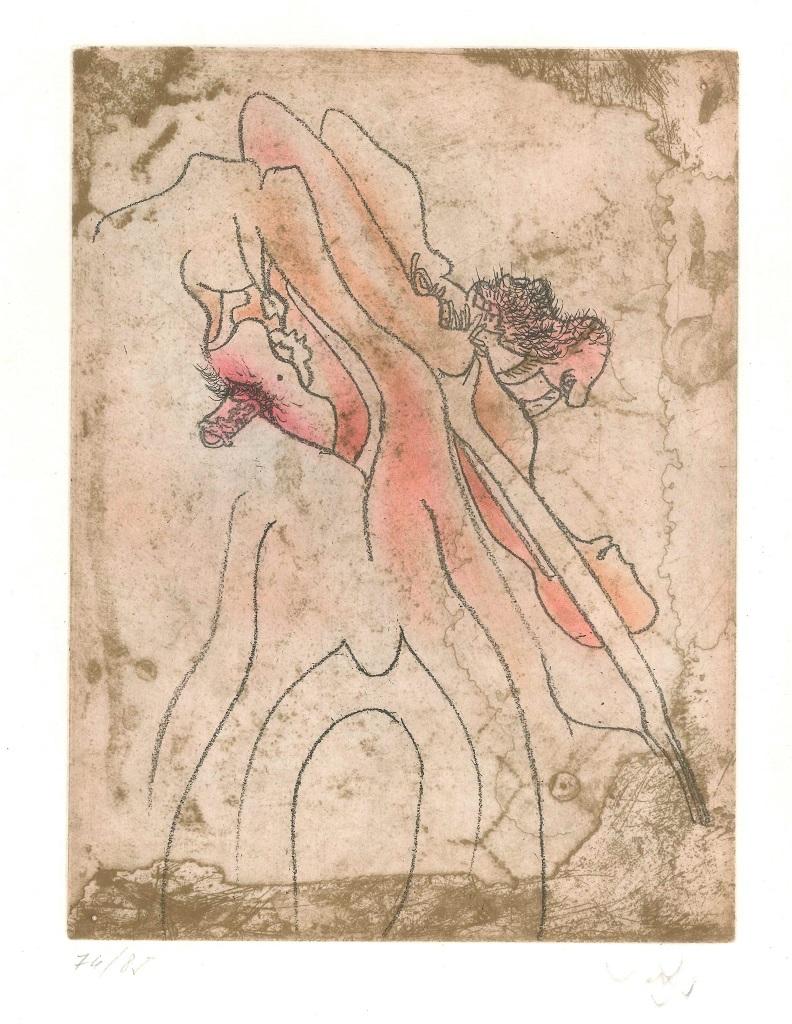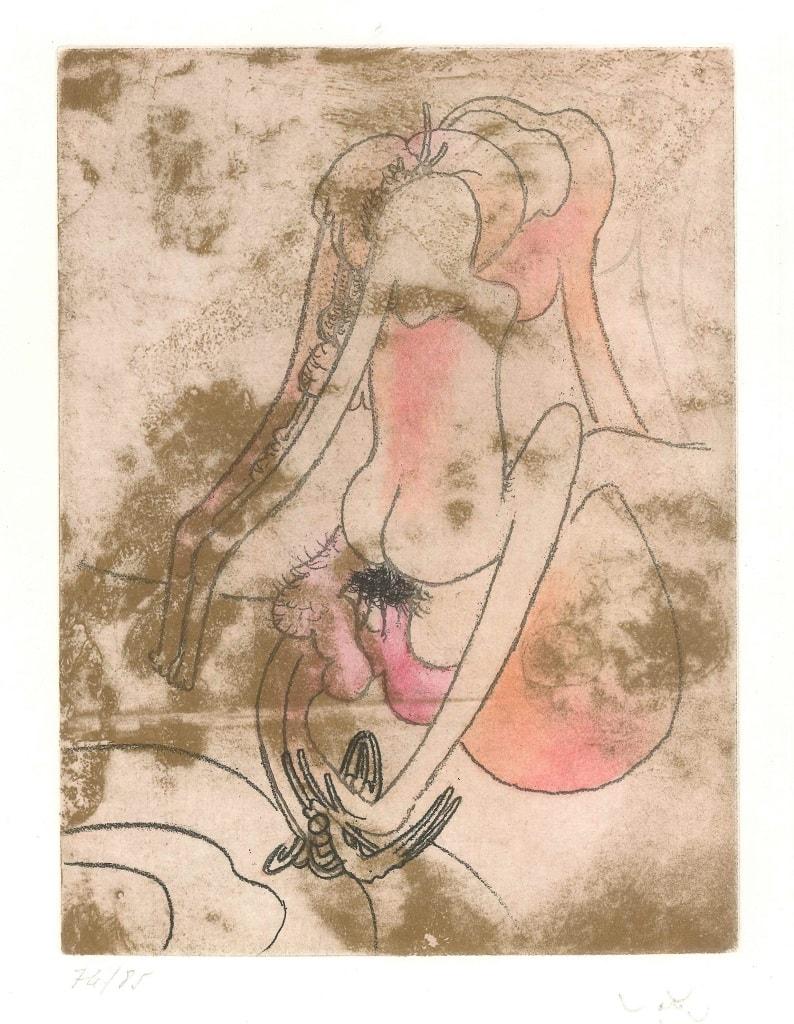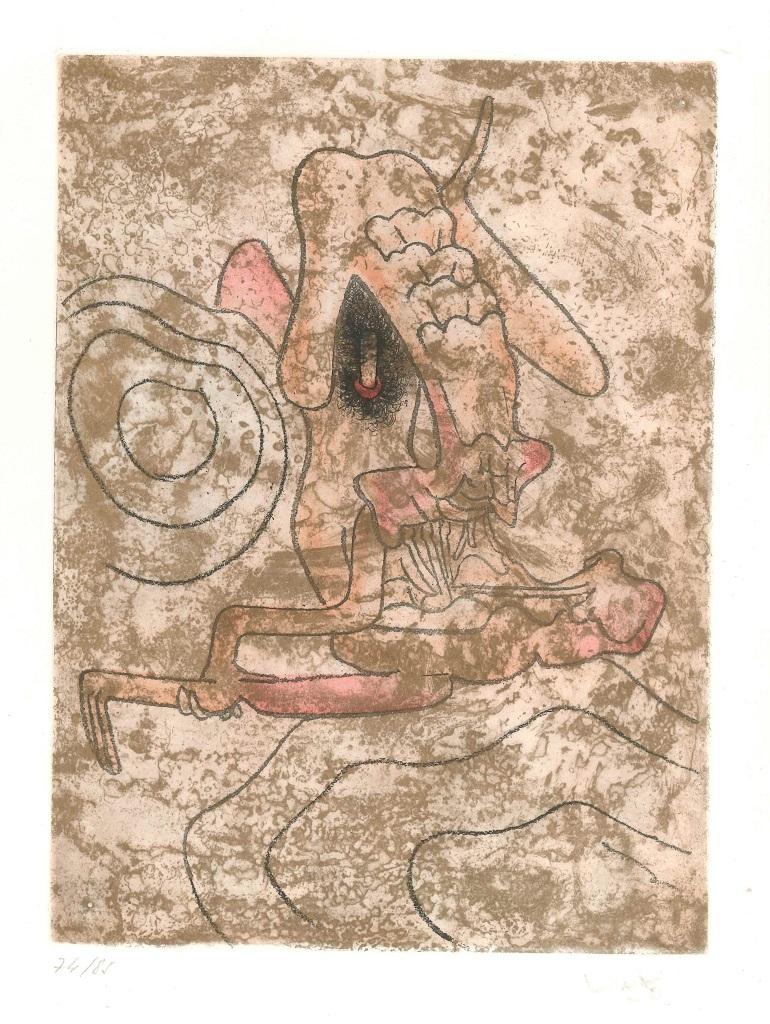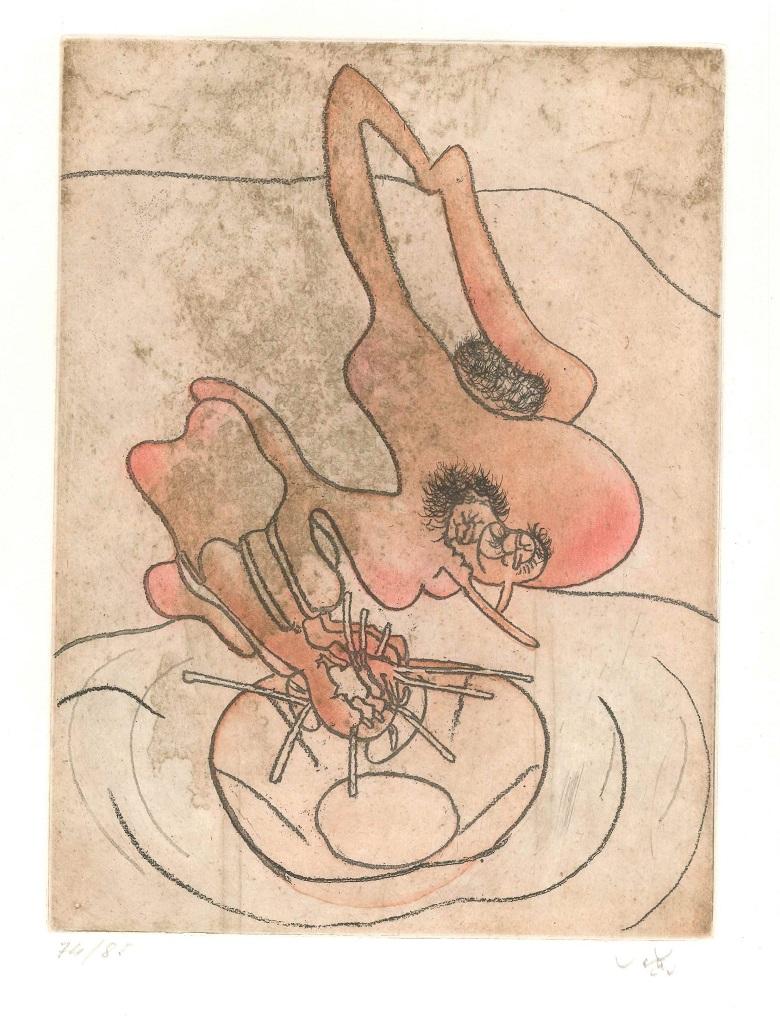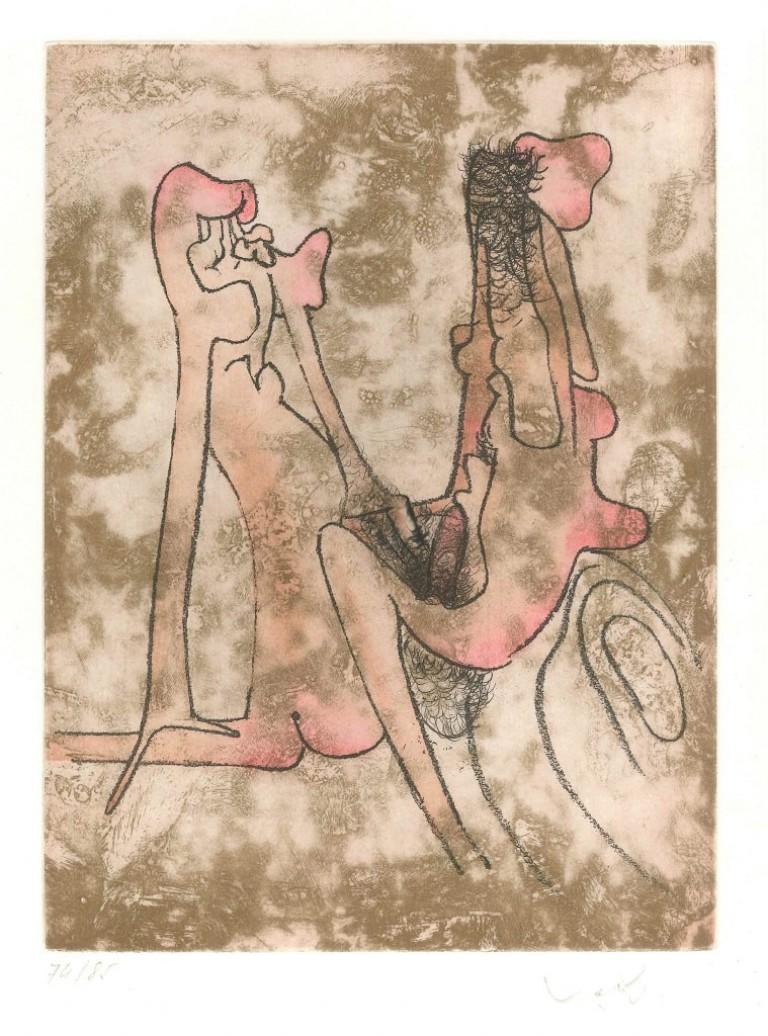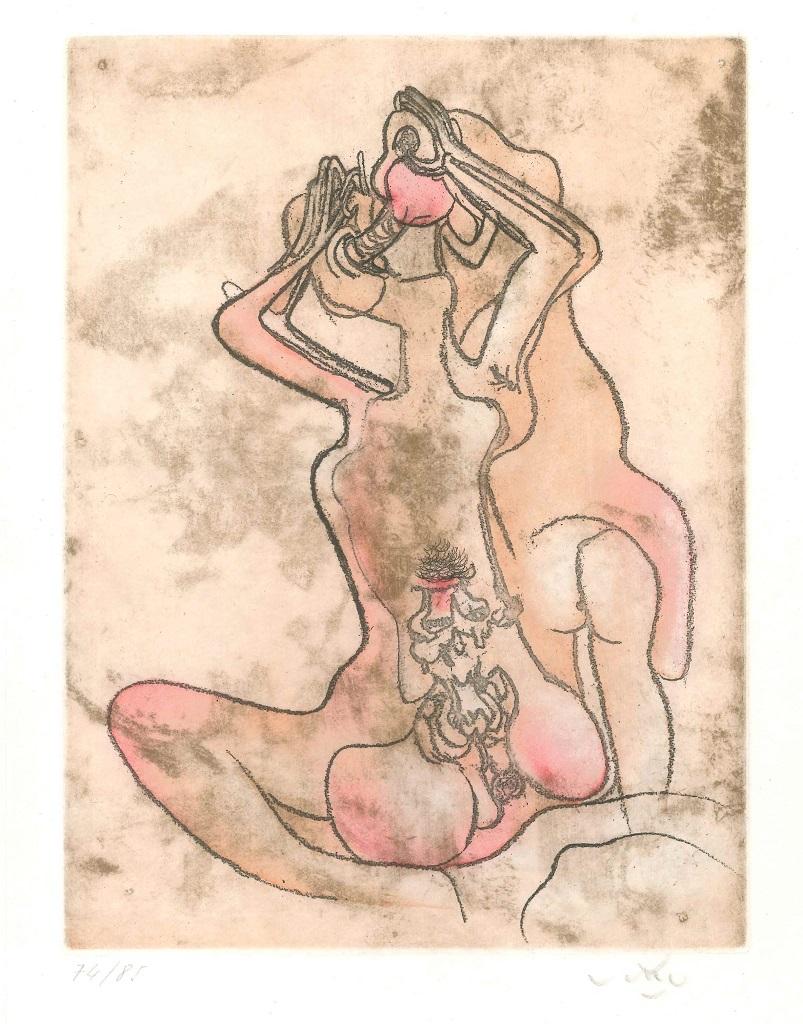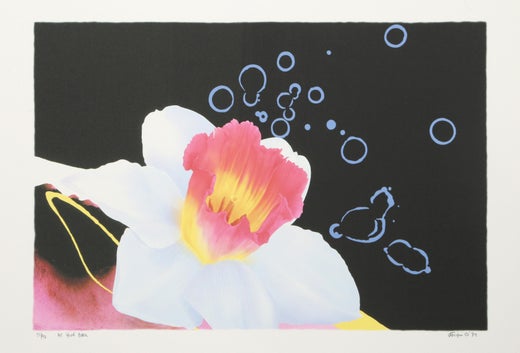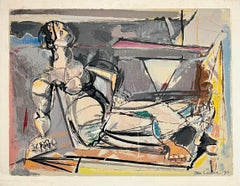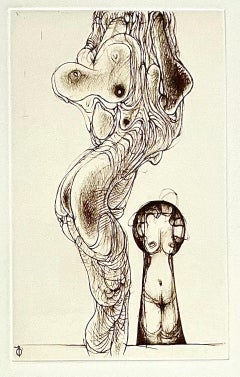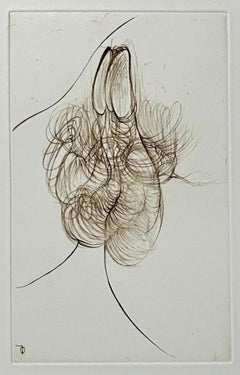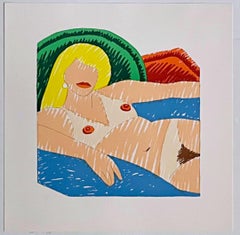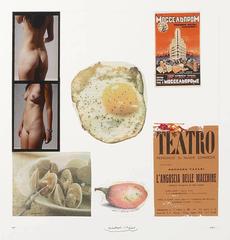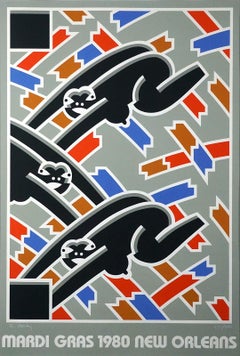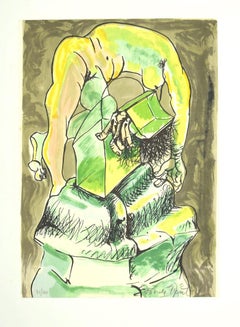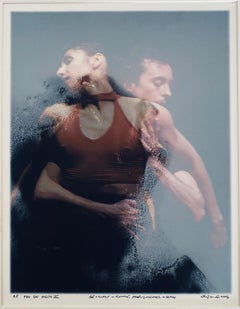
Silkscreen Surrealist Pop Art Print "Pas De Deux"
View Similar Items
Michael KniginSilkscreen Surrealist Pop Art Print "Pas De Deux"2006
2006
About the Item
- Creator:Michael Knigin (1942 - 2011, American)
- Creation Year:2006
- Dimensions:Height: 20 in (50.8 cm)Width: 16 in (40.64 cm)
- Medium:
- Movement & Style:
- Period:
- Condition:Good, please see photos.
- Gallery Location:Surfside, FL
- Reference Number:1stDibs: LU3826659532
Michael Knigin
Michael Knigin, painter, printmaker, muralist, photographer, and teacher, was born in Brooklyn, New York on December 9, 1942. He received his BFA in 1966 from the Tyler School of Art, Temple University in Philadelphia. In 1964 he was awarded a Ford Foundation Grant, which enabled him to study printmaking at the Tamarind Lithography Workshop and collaborate with Rufino Tamayo. Knigin was a full professor at the Pratt Graphic Center in Manhattan between 1967 and 2003. From 1968 through 1972, he also co-owned and directed the Chiron Press where he worked with Andy Warhol, Louise Nevelson, Kenneth Noland, Larry Poons, and Tom Wesselman. In 1974, he served as Art and Technical Director of the Burston Graphics Art Centre in Jerusalem. In 1988, Knigin was appointed to the NASA Art Team and was sent to the Kennedy Space Center to visually interpret the launch of the space shuttle Discovery. In 1991, Nasa recalled him to interpret the touchdown of the space shuttle Atlantis. Knigin's works were exhibited widely and are in numerous permanent collections including the Albright-Knox Museum, Brooklyn Museum, Carnegie Mellon Institute, Cooper Hewitt Museum, Library of Congress, McNay Museum, Mexico City Museum of Modern Art, Portland Museum of Art, Smithsonian Museum of American Art, Whitney Museum of American Art, and the Worchester Museum of Art. With Murray Zimiles, Knigin co-authored The Technique of Fine Art Lithography in 1969, and Contemporary Lithographic Workshops around the World in 1974. Michael J. Knigin died on January 19, 2011.
More From This Seller
View All21st Century and Contemporary 85 New Wave Abstract Prints
Screen
Mid-20th Century Cubist Abstract Prints
Screen
20th Century Abstract Prints
Etching
20th Century Abstract Prints
Etching
20th Century Abstract Prints
Etching
20th Century Abstract Prints
Etching
You May Also Like
1970s Pop Art Nude Prints
Screen, Paper
Contemporary Abstract Prints
Mixed Media, Screen
20th Century Abstract Geometric Abstract Prints
Screen
Late 20th Century Abstract Abstract Prints
Lithograph
1970s Contemporary Abstract Prints
Etching, Aquatint
1970s Contemporary Abstract Prints
Etching, Aquatint
